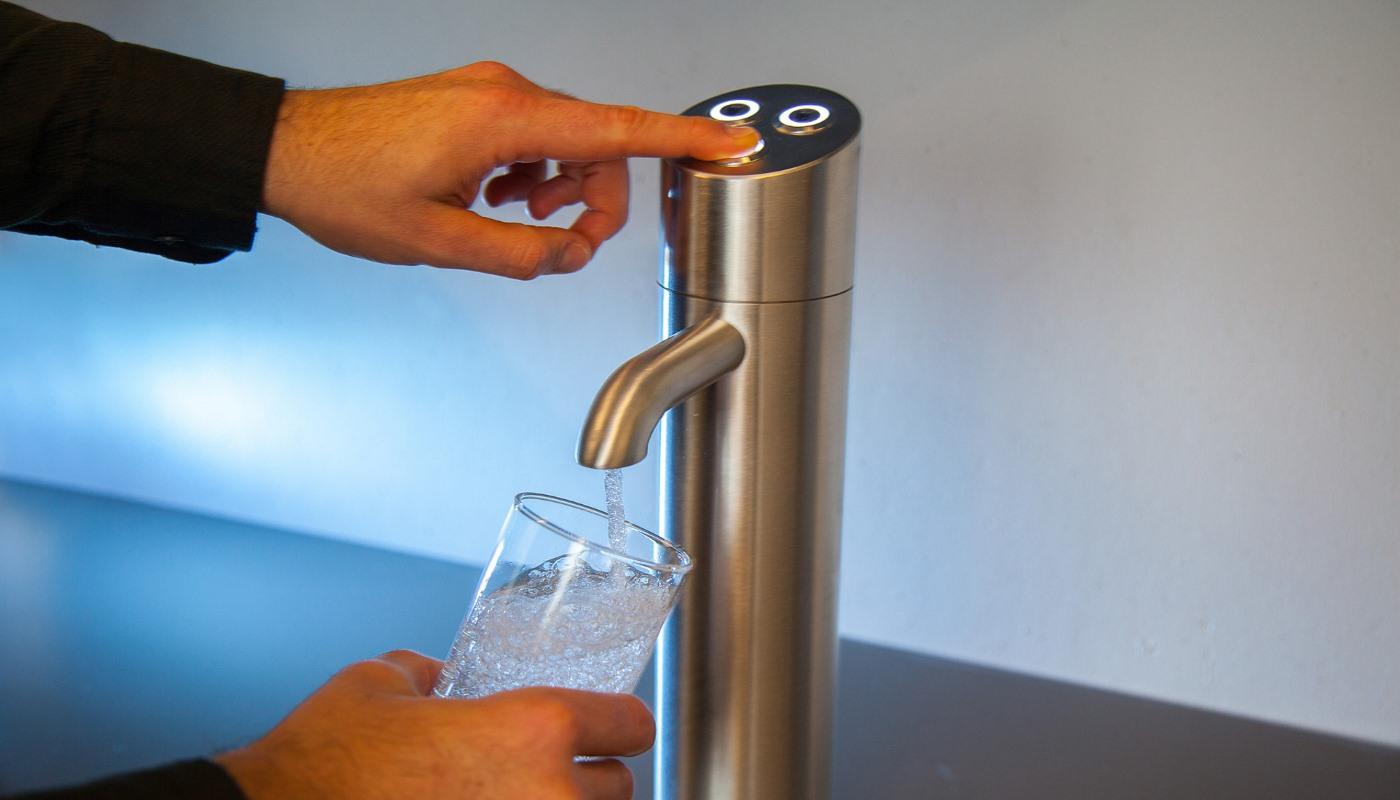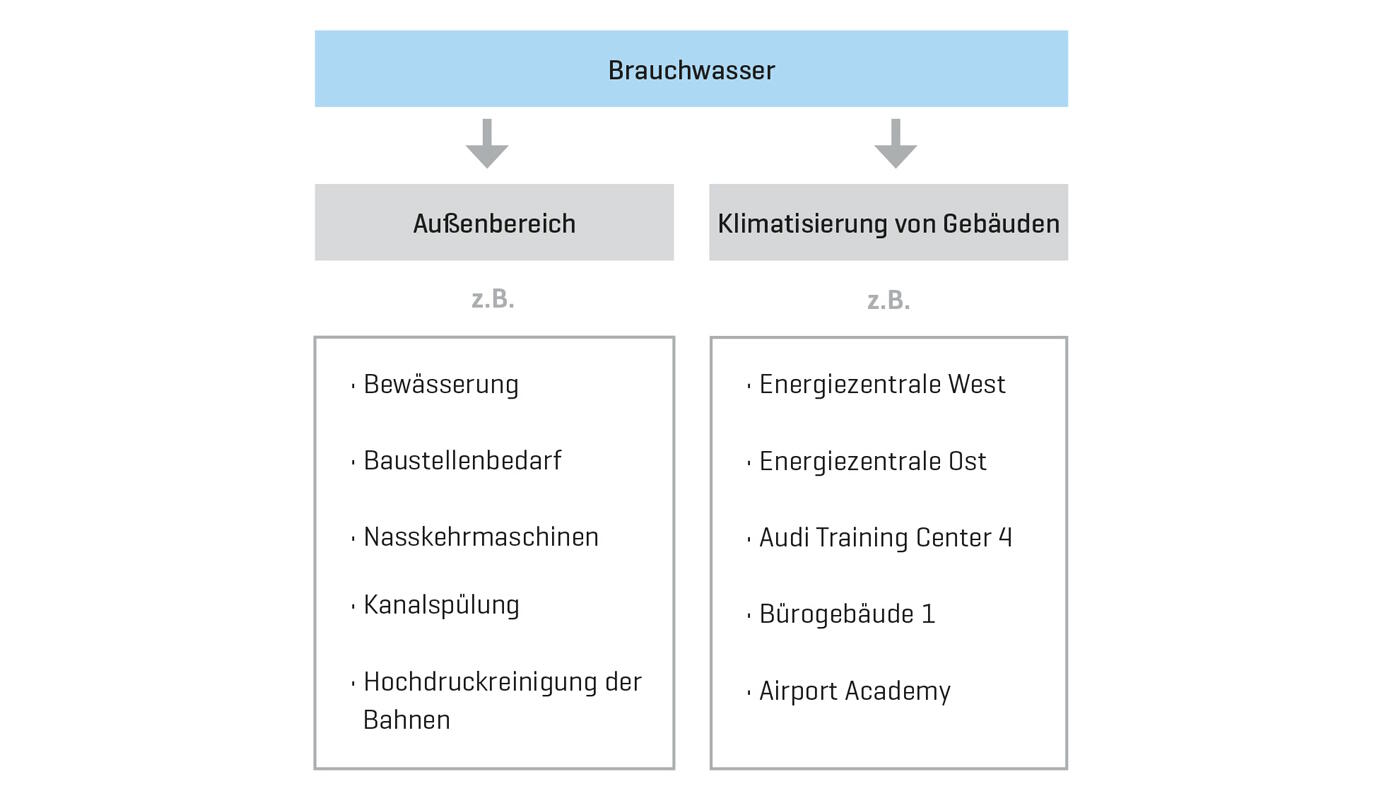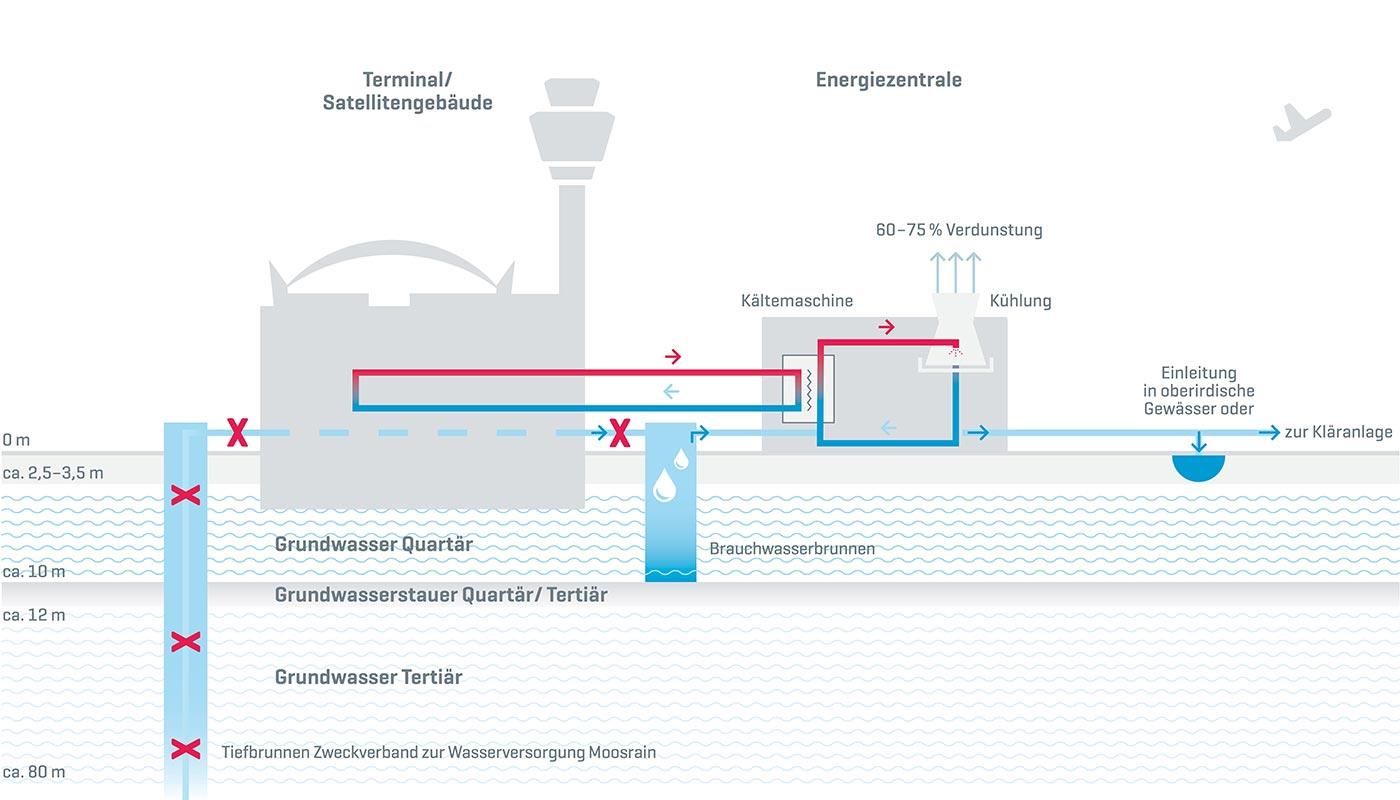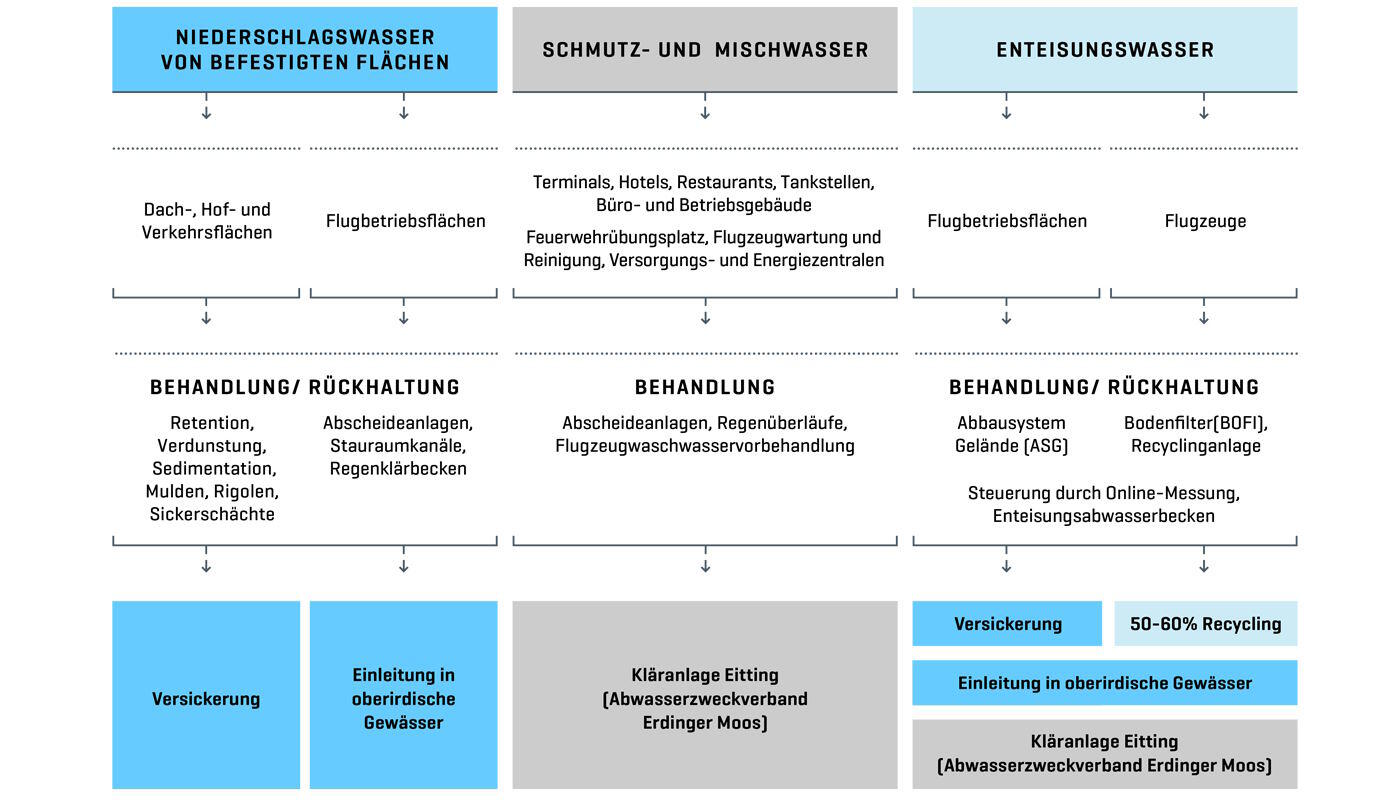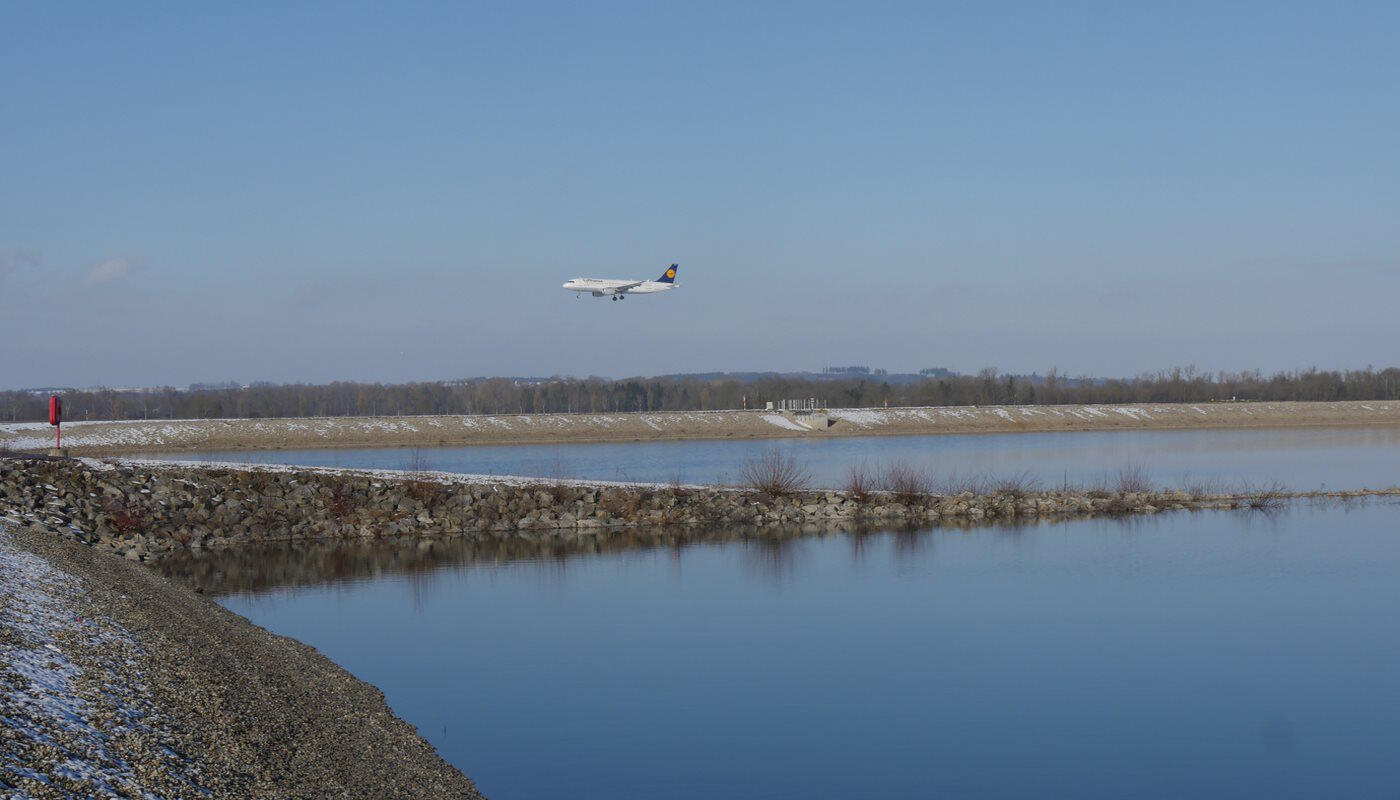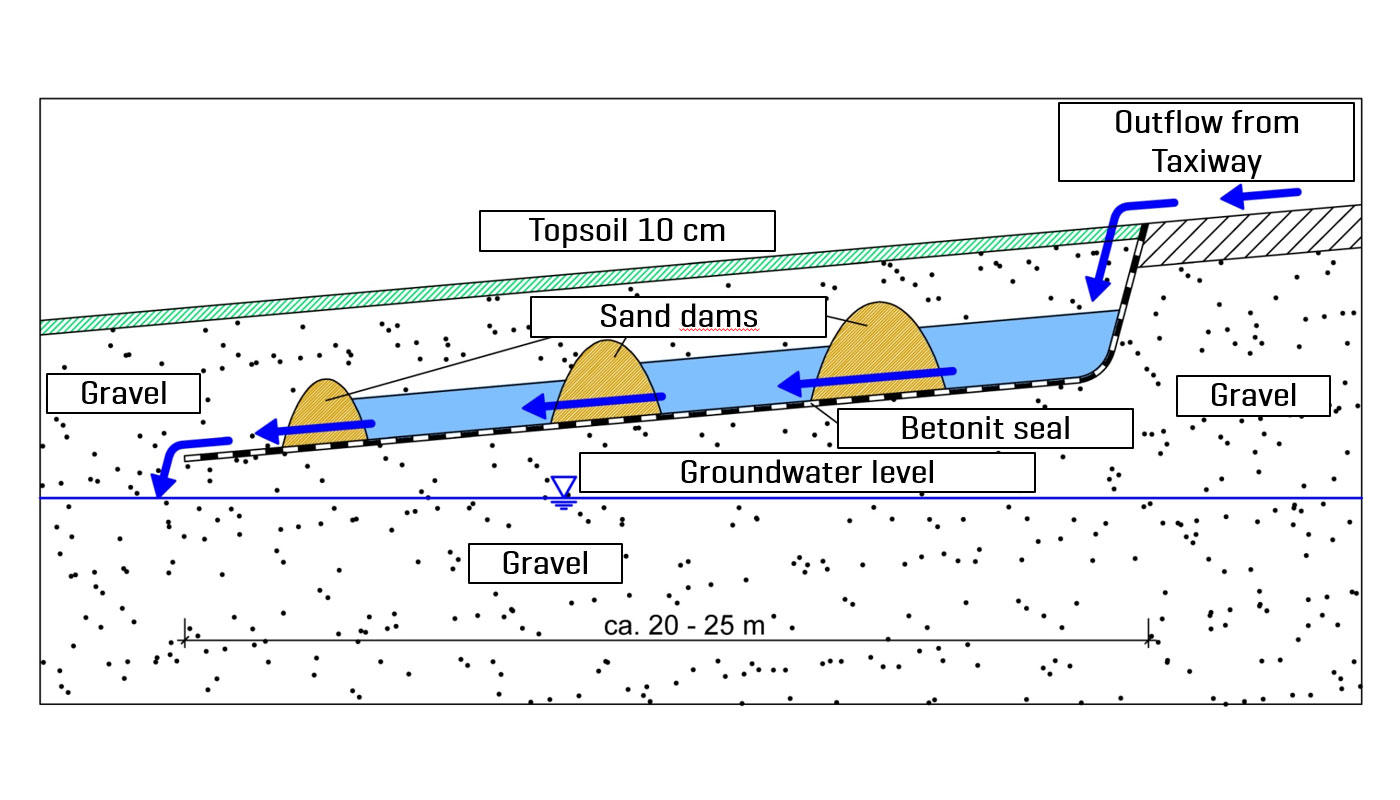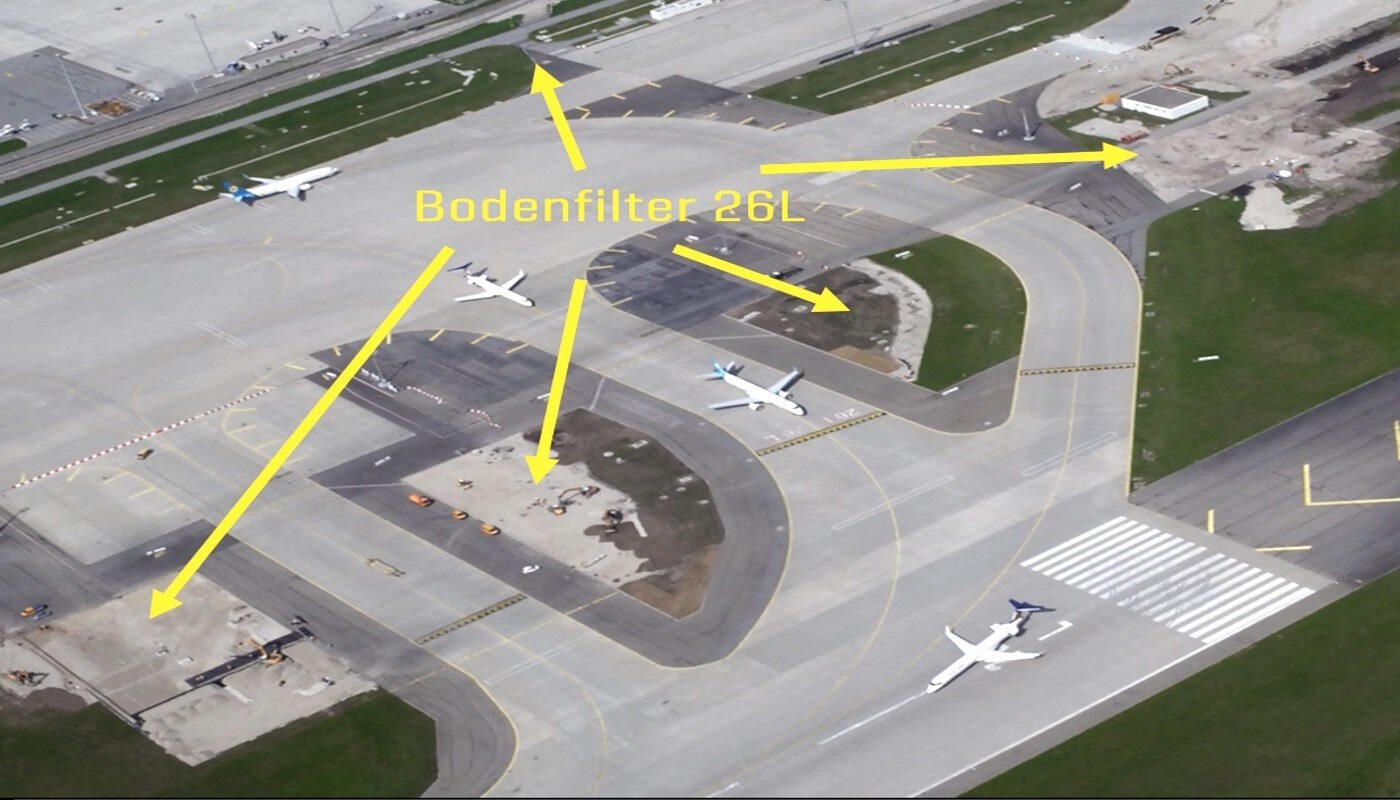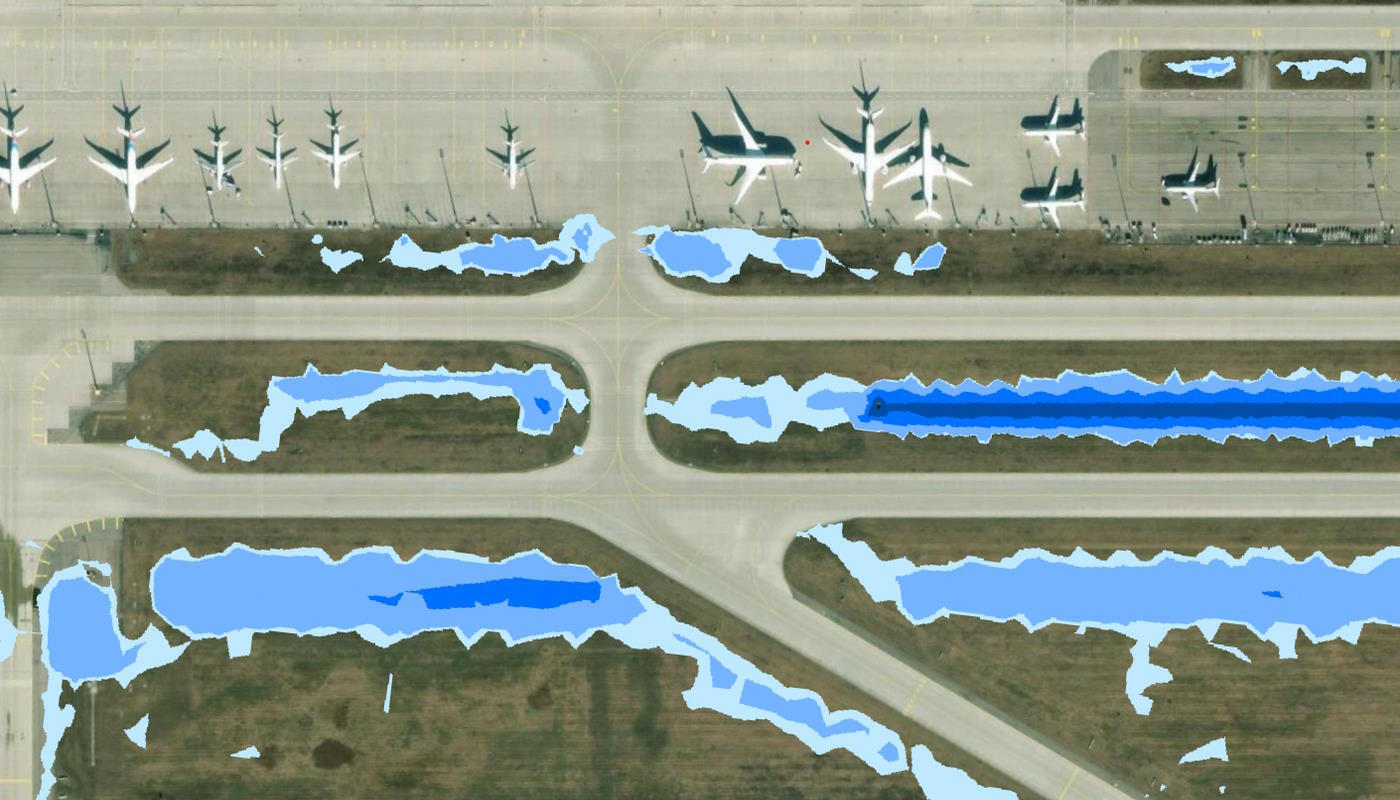Drinking water is precious and essential to life. To ensure that groundwater can continue to be used as drinking water in the future, this resource must be used sparingly. With regard to drinking water use at the airport, this means using drinking water sparingly and, as far as possible, using drinking water only when drinking water quality is actually necessary.
Water-saving valves in the terminal areas help reduce drinking water consumption. In car washes, the washing water that is used is reused multiple times after treatment. The fire service training area mostly uses rainwater for firefighting. This is collected from the paved areas of the training area and stored. Rainwater or groundwater from near the surface is increasingly being used for irrigation of green areas, for air conditioning in buildings, for cleaning roads, sewers, and aircraft maneuvering areas, and for humidification on construction sites.
Protecting the groundwater from contamination, particularly with water-polluting substances, is also a key task at Munich Airport. Fuel depot
